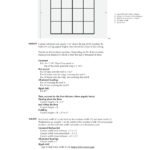The Optavia diet, a pre-packaged meal replacement program, promises weight loss through portion-controlled meals and snacks called “Fuelings.” But its cost and potential health risks lead many to seek comparable alternatives. This article explores Optavia, its pros and cons, and how to create a similar diet plan at home that prioritizes your health and budget.
Understanding the Optavia Diet
Optavia, the successor to the Medifast diet, provides a structured weight-loss approach combining pre-packaged Fuelings with “Lean & Green” meals you prepare yourself. The program emphasizes low-carb, high-protein intake and typically involves eating six small meals per day. Optavia also offers a “Habits of Health” program, access to a health coach, and a supportive community.
There are three main Optavia plans:
- 5&1 Plan: Five Fuelings and one Lean & Green meal daily.
- 4&2&1 Plan: Four Fuelings, two Lean & Green meals, and one healthy snack.
- 3&3 Plan: Three Fuelings and three Lean & Green meals.
Lean & Green meals consist of lean protein, non-starchy vegetables, and healthy fats. Fuelings include shakes, soups, bars, and biscuits designed to be low in calories and carbs while high in protein.
Evaluating Optavia: Pros and Cons
While Optavia may lead to initial weight loss, it’s crucial to weigh the benefits and drawbacks:
Potential Benefits:
- Structured Approach: The pre-portioned meals and guidelines can simplify weight loss for some.
- Initial Weight Loss: The low-calorie nature of the diet can result in rapid weight loss, though sustainability is a concern.
Potential Drawbacks:
- Low Calorie Intake: Some plans drastically restrict calories, potentially leading to nutrient deficiencies, fatigue, and other health issues.
- Processed Foods: Reliance on pre-packaged meals may limit nutritional value and expose you to additives.
- Cost: Optavia can be significantly more expensive than grocery shopping and preparing your own meals.
- Sustainability: The restrictive nature of the diet can make it difficult to maintain long-term.
Creating a Comparable Diet at Home
A healthier and more sustainable approach is to replicate the principles of Optavia at home. This allows for greater control over ingredients, portion sizes, and cost.
Focus on Lean & Green Meals:
Emulate Optavia’s Lean & Green meal concept by building your meals around:
- Lean Protein: Chicken breast, fish, tofu, beans, lentils.
- Non-Starchy Vegetables: Leafy greens, broccoli, cauliflower, zucchini, peppers.
- Healthy Fats: Avocado, nuts, seeds, olive oil.
Healthy Snack Alternatives: Replace Optavia Fuelings with whole-food snacks:
- Fruits: Apples, berries, bananas.
- Vegetables: Carrot sticks, celery, cucumber.
- Nuts and Seeds: Almonds, walnuts, pumpkin seeds.
- Greek Yogurt: A good source of protein.
Prioritize Whole Foods: Opt for fresh, unprocessed ingredients whenever possible to maximize nutrient intake and minimize additives.
Consulting with a Healthcare Professional
Before starting any new diet, especially one involving significant calorie restriction, consult with your doctor or a registered dietitian. They can help you determine a safe and effective plan that meets your individual needs and health status. Remember, sustainable weight loss is a journey, not a race. Focus on making gradual, long-term lifestyle changes that prioritize both your physical and mental well-being.
